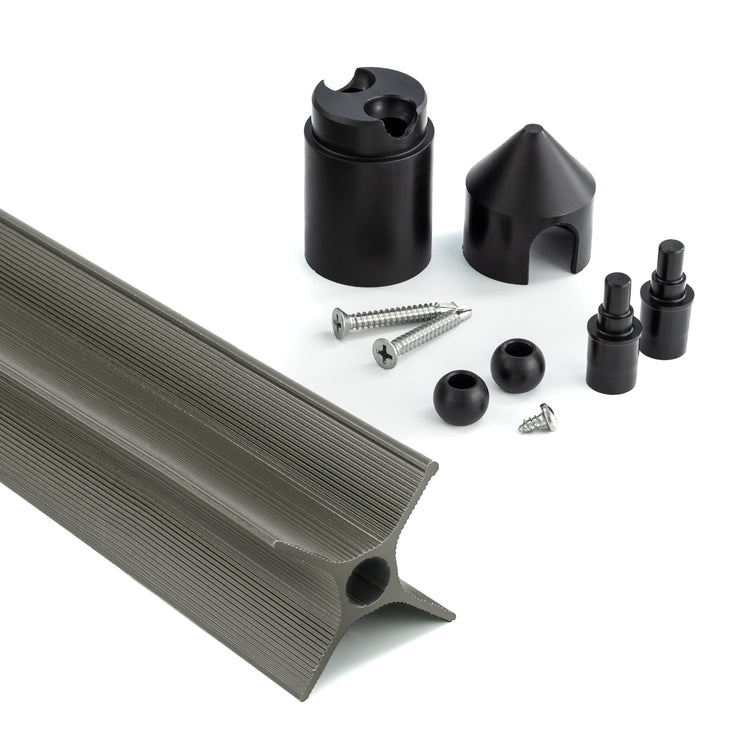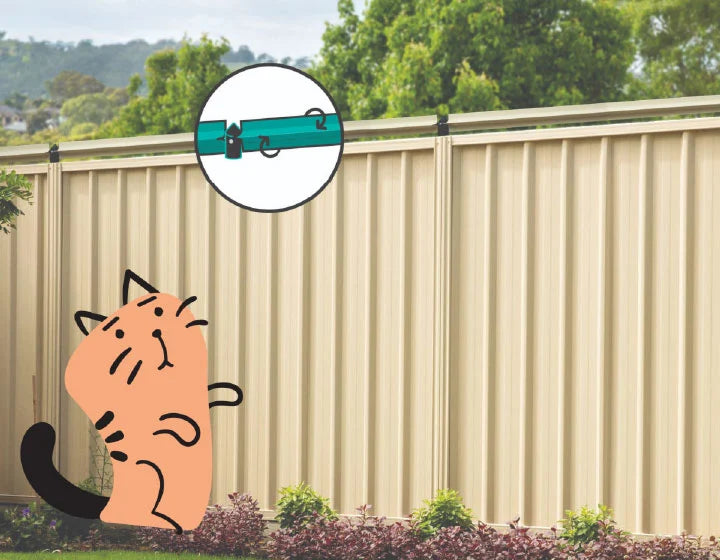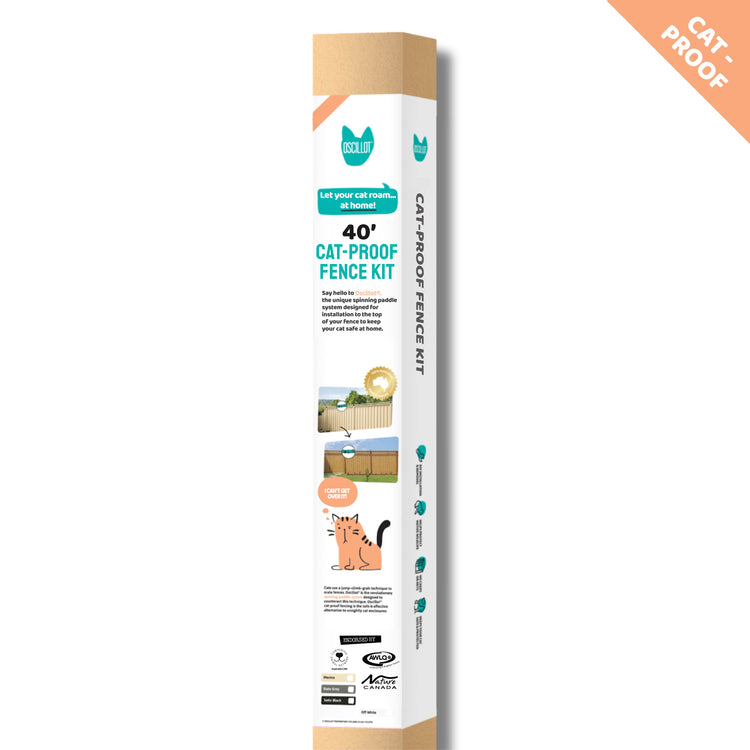How to Safely Install Cat Fence Kits in Winter | Oscillot America

How to Safely Install Cat Fence Kits in Winter
A Complete Guide for American Homeowners

Installing a cat containment system during winter months presents unique challenges for American homeowners, particularly those in the Northeast, Midwest, and Mountain states. However, with proper preparation and techniques, you can successfully install an Oscillot cat fence kit even when temperatures drop below freezing. This comprehensive guide will walk you through everything you need to know about winter installations, from material handling to post-installation maintenance.
Understanding Winter Installation Challenges
Winter installation of cat fence systems requires special consideration of environmental factors that don't affect warm-weather projects. Frozen ground makes drilling and securing posts significantly more difficult, while cold temperatures affect the performance of adhesives, sealants, and the flexibility of plastic components. The Oscillot system uses rotating paddles that must function smoothly year-round, making proper winter installation crucial for long-term performance.

Temperature Thresholds to Know
Critical temperature ranges for installation: Most adhesives and sealants require temperatures above 40°F (4°C) to cure properly. When temperatures drop below 32°F (0°C), consider postponing adhesive-dependent steps or using winter-grade products specifically rated for cold-weather applications.
Regional Climate Considerations Across America
The United States encompasses diverse winter climates that affect installation strategies. Northeast regions like Massachusetts, New York, and Pennsylvania experience harsh winters with temperatures often below 20°F (-6°C), requiring heated garages for material preparation. Midwest states including Illinois, Wisconsin, and Minnesota face similar challenges with added wind chill factors. Mountain states such as Colorado and Montana deal with extreme temperature fluctuations and heavy snowfall. Even southern states can experience unexpected freezes that impact installation timelines.

Essential Winter Installation Tools and Materials
Beyond standard installation tools, winter projects require specialized equipment. Invest in a high-quality auger or power drill with masonry bits capable of penetrating frozen ground. Keep materials indoors at room temperature until needed, particularly the rotating paddles and mounting brackets. Cold plastic becomes brittle and prone to cracking during installation. Use winter-grade exterior adhesives and sealants rated for temperatures down to at least 0°F (-18°C).
Available Cat Fence Kit Options
Step-by-Step Winter Installation Process
Pre-Installation Preparation
Begin by storing all kit components indoors for 24-48 hours before installation. This warming period prevents thermal shock and ensures materials remain pliable during handling. Survey your fence line and mark post locations while considering snow accumulation patterns and drainage routes. Avoid areas where spring thaw may cause settling or erosion issues.

Pro Tip for Frozen Ground
If the ground is frozen solid, pour hot water over drilling locations 15-20 minutes before starting. This temporarily softens the top layer, making initial penetration easier. For deeply frozen ground, consider using a propane torch to carefully warm the surface before drilling.
Working with Cold-Weather Adhesives
Cold weather dramatically slows adhesive curing times. When temperatures hover between 40-50°F (4-10°C), expect double or triple the normal curing time. Use a heat gun or hair dryer to warm bonding surfaces immediately before applying adhesive. Create a temporary shelter around installation areas using plastic sheeting to trap warmth and protect from wind. Some installers use chemical hand warmers placed near adhesive joints to maintain temperature during initial curing.
Installing the Oscillot System Components
The heart of any Oscillot system is its rotating paddle mechanism. In winter, test rotation before securing each paddle permanently. Cold temperatures can cause temporary stiffness in the rotation mechanism. Apply a silicone-based lubricant specifically designed for cold weather operation. Avoid petroleum-based products that thicken in cold temperatures.

Common Winter Installation Mistakes to Avoid
Understanding potential pitfalls helps ensure successful installation. The most common error is rushing adhesive cure times because of cold discomfort. Avoid the temptation to declare a section complete before adhesives fully set. Another frequent mistake involves inadequate material warming, leading to cracked brackets or split mounting components. Review common installation mistakes before beginning your winter project. Additionally, consider whether your specific fence type requires brackets or alternative mounting methods.
When to Consider Professional Installation
While many homeowners successfully complete DIY installations, winter conditions may warrant professional assistance. Frozen ground requiring specialized equipment, extreme temperatures below 0°F (-18°C), or limited daylight hours in northern latitudes all favor professional installation. TaskRabbit professionals familiar with Oscillot systems bring experience handling cold-weather challenges and typically complete installations faster, minimizing exposure to harsh conditions.

Snow and Ice Management During Installation
Active snowfall complicates installation significantly. Wait for clear weather whenever possible, as snow accumulation obscures fence lines and makes accurate measurement difficult. If you must work during winter, clear snow thoroughly from the entire fence line before beginning. Mark post locations with stakes tall enough to remain visible above potential snowfall. Ice accumulation on existing fences requires complete removal before installing brackets or mounting hardware, as ice prevents proper adhesion and creates uneven mounting surfaces.
Post-Installation Testing in Cold Weather
After installation, conduct thorough testing before considering the project complete. Test each rotating paddle manually, ensuring smooth 360-degree rotation despite cold temperatures. The paddle should rotate freely with minimal resistance. If rotation feels stiff, apply additional cold-weather lubricant to pivot points. Conduct tests during the coldest part of the day, typically early morning, to ensure functionality at temperature extremes your system will experience.
Winter Maintenance and Long-Term Performance
Once installed, your Oscillot system requires minimal winter maintenance but benefits from periodic checks. After heavy snowfall, remove accumulated snow from paddles to prevent ice buildup that could impede rotation. Spring thaw may reveal settling or frost heave that affected post stability. Conduct a thorough inspection as temperatures warm, tightening any hardware loosened by freeze-thaw cycles. The system's durability in harsh American winters has been proven by thousands of installations, as evidenced by verified customer reviews.

Trusted by Thousands of American Cat Owners
See what other homeowners say about their Oscillot installations, including winter projects.
Read ReviewsMaking Your Winter Installation Decision
Successfully installing a cat fence kit during winter is entirely achievable with proper planning and technique. American homeowners across diverse climate zones have completed winter installations that perform flawlessly for years. The key factors for success include respecting temperature limitations for adhesives, properly warming materials before use, protecting work areas from wind and precipitation, and allowing adequate cure times despite cold conditions. Whether you choose DIY installation or professional help through TaskRabbit, winter installation ensures your cat containment system is ready for spring when your feline friends are most eager to explore the outdoors.
Current pricing makes winter installation particularly attractive, with the 40' kit at $301 (regularly $377), the 60' kit at $443 (regularly $554), and the 100' kit at $710 (regularly $888). Browse the complete selection of Oscillot kits to find the perfect size for your property. With proper winter installation techniques and these quality products, you'll provide your cats with safe outdoor access while maintaining your peace of mind throughout every season.






